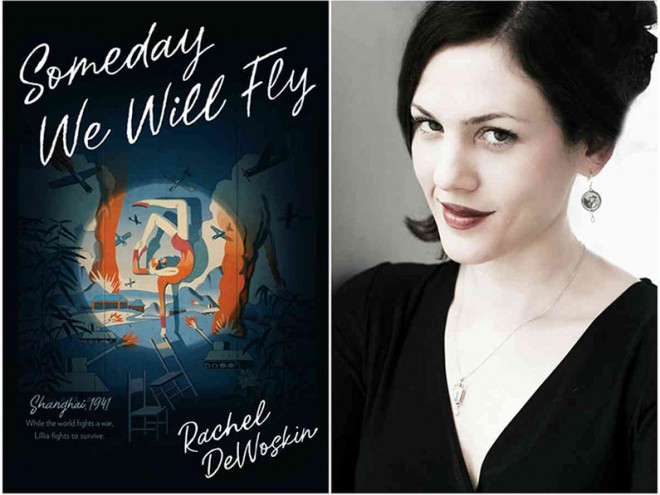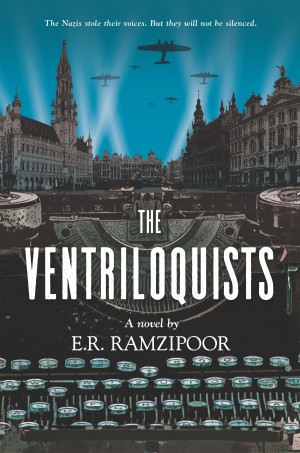
Vampires and the Chupacabra share a penchant for drinking blood, Godzilla and werewolves are both pretty hairy, and it is hard to spot either Nessie or a zombie in the wild… but what makes them all monsters? When looking at the Latin root of the word monstrum, monsters are literally “ominous” or “warning signs.” In his studies of medieval literature, Jeffrey Jerome Cohen compiled seven theses about the characteristics of monstrous creatures. According to him, monsters warn us about ourselves because they are signs of our cultural fears and desires. Because they live at the edges of what we imagine as different and impossible, monsters always manage to get away when we hunt them and then return to haunt us. This understanding of monsters as cultural signs might make you wonder what kinds of creatures populate Jewish history and literature — and what they tells us about Jewish culture. In response, here is a typology of “Jewish monsters” that draws on a new book about Monsters and Monstrosity in Jewish History, edited by Iris Idelson-Shein and Christian Wiese. It will take us from mythical figures to anti-Semitic ascriptions of animality, all the way to those posing a monstrous threat to Jewish thriving.

Prague Golem
1. Demons, Dybbuks, and the Golem
Some of the most famous monsters in Jewish culture are creatures of the night. Demons, for instance, have been imagined for centuries as evil spirits that interfere with human lives by throwing individuals or the community into disarray through their acts of destruction. Dybbuks possess a person as punishment or revenge, such as in S. Ansky’s early twentieth-century play The Dybbuk, in which the spirit of a spurned lover possesses his beloved on the day of her wedding to another. The Golem, on the other hand, is the result of the magical animation of a clay structure that comes to life in ways similar to Frankenstein’s monster. Its most famous iteration, the story of the Golem of Prague, has been adapted countless times in literature and film, from the likes of Isaac Bashevis Singer to Michael Chabon in his Pulitzer prize-winning novel The Amazing Adventures of Kavalier & Clay, and from expressionist silent films to appearances on TV shows like The X‑Files and The Simpsons. All of these famous monsters are Jewish because they are firmly rooted in Jewish myth, folklore, and religious texts. They haunt those within Jewish culture or protect the borders of the Jewish community. These “Jewish monsters” differ from the figure of the vampire, for instance, which is “the Jew as monster,” an antisemitic stereotype of a bloodsucking parasite that goes hand in hand with accusations of blood libel.

Nosferatu
2. Jewish Werewolves and Other Animals
Similar to the vampire, imagining Jews as animals or human-animal hybrids frequently falls into the range of anti-Semitic stereotypes of Jews as threats to their presumably Christian neighbors. Yet monstrous “Jew-Animals” can also attack their own community, as the example of H. Leivick’s The Wolf shows. In this early twentieth-century Yiddish poem, a rabbi who is the sole survivor of his massacred congregation is turned into a werewolf, and when he attacks Jewish families who are trying to build a community on the same blood-soaked grounds, he becomes a literal warning sign in order to save them from the same fate. In Franz Kafka’s writing, animal figures can also be understood as warnings to Jewish readers about gentiles, albeit in less gruesome and more satirical ways. His Report to an Academy from 1917 features an ape-turned-human, who learns how to smoke, drink, and finally speak by imitating the rough sailors shipping him to a European zoo. In this allegory of Jewish assimilation to gentile society, an eloquent ape ridicules the supposedly civilized, Christian, Western ideal by revealing it to be a brutish idol.

Photo credit to NBC
3. Figures of Assimilation
Jewish characters that undergo a monstrous metamorphosis are not always swapping species or using an animal tale as an allegory for assimilation. In Oskar Panizza’s late nineteenth-century story The Operated Jew, a young Jewish man invests a lot of money in doctors and scientists to change his appearance, behavior, and manner of speaking in order to be accepted as gentile in German society. He succeeds spectacularly, but only for a while — on his wedding night, he drinks too much and disintegrates to reveal his essence, that of “the monstrous Jew.” At a time when assimilated Western European Jewry found that baptism granted equal treatment only on paper, the story satirizes the impossible demands of assimilation. Thirty years later, in the 1920s, Salomo Friedlaender reversed the story in The Operated Goy, which has a Nazi supporter fall in love with a Jewish woman. After Sigmund Freud personally makes the young man aware of his suppressed amorous affliction in the story, the latter converts to Judaism in a series of similarly grotesque operations that alter his appearance, behavior, and speech. This satire paints a future in which one can change one’s skin color like one’s hair color, which undermines pseudo-scientific nationalist and racist ideologies. The newly minted Jew lives out his life peacefully with his wife and many sons in Jerusalem.

Cover of The Operated Jew
4. The Monstrous Nazi
Unfortunately, such a happy ending was only to be in literature. Reality would threaten Jewish culture with a fatally monstrous type, the Nazi. Survivor testimonies often refer to key perpetrators of the Holocaust, such as Adolf Eichmann, as monsters because their crimes are seemingly ungraspable and indescribable. Yet with the phrase “the banality of evil,” philosopher Hannah Arendt has pointed to the ordinary and average nature of people like Eichmann, who defended his deeds by saying that he was “just doing his job” and “following orders.” Monstrosity is a way to explain the unimaginable, yet by doing so, the monster’s origin from the midst of society is obscured. Holocaust literature also features many examples in which dehumanizing acts render the perpetrators monstrous, yet dehumanization sometimes taints the victims with a sense of their own monstrosity in these texts. In Edgar Hilsenrath’s novel Night, for instance, the inhabitants of a fictional ghetto treat one another in increasingly inhumane ways in order to ensure their own survival. The novel suggests that under monstrous circumstances, monsters can beget monsters.

As history shows, the demonization of one group by another, such as antisemitic Nazi propaganda that depicted Jews as monstrous creatures, prompted horrific acts of dehumanization. The assumption of Jewish monstrosity enabled the perpetrators to deny the humanity of their victims. In this understanding of monstrosity, the opposite of a monster would be a human — a mensch both in its German root of “human being” and its Yiddish meaning of a good person. Drawing on a similar understanding of monstrosity and human morality, Friedrich Nietzsche therefore famously cautioned, “Whoever fights monsters should see to it that in the process he does not become a monster.” Yet the distinction between monster and mensch is not always this clear. As Cohen has shown, monstrosity emerges from our fears and desires, from the midst of human culture. Therefore, engaging with monstrosity requires us to look beyond the different and impossible, and instead focus on the familiar — to identify the fears and desires within human nature that give rise to the monstrous.
Joela Jacobs is an assistant professor of German at the University of Arizona. Her research focuses on intersections of Jewish studies and the Environmental Humanities with German literature. She is currently working on a monograph about the modernist micro-genre of the Literary Grotesque (die Groteske), which critiques the institutionalized marginalization of human and non-human life.



